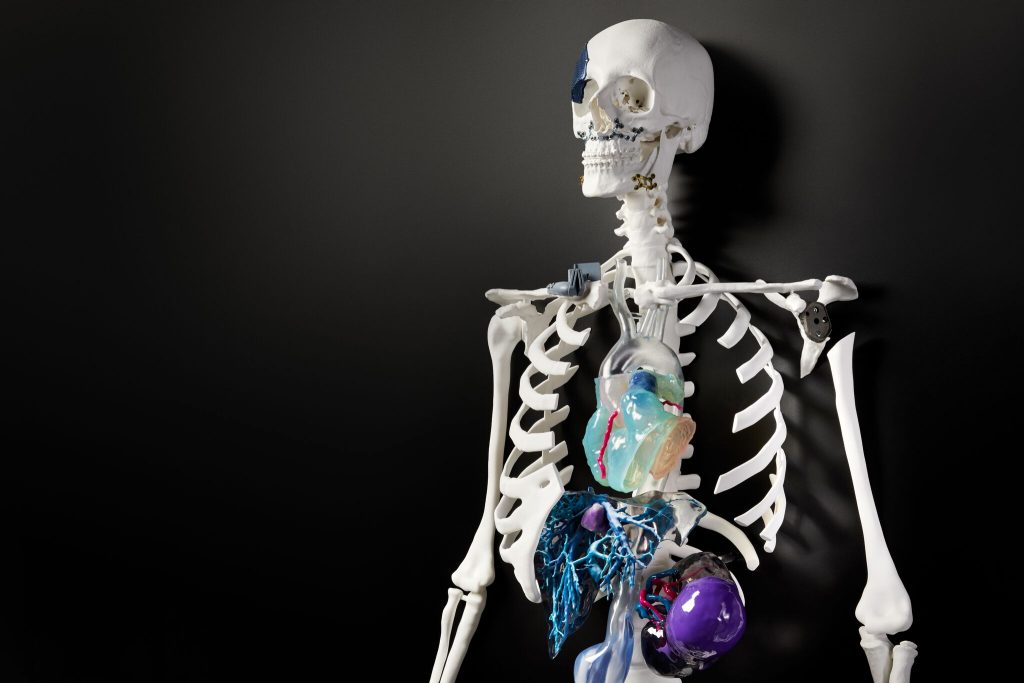Bryan Crutchfield is the Vice President and General Manager of Materialise. Materialise NV is one of the largest and longest-established independent companies in the 3D printing. Materialise is both a large 3D printing service bureau as well as the largest vendor of 3D printing software. The company also makes software for medical professionals in 3D printing catering to surgeons, researchers, and manufacturing companies. Materialise is also particularly interested in rolling out software to hospitals.
What is the Materialise initiative on 3D printers in hospitals all about?
Our founder realized that if we made bad data we would not get great products. 5 years into our history people realized that we could use slices and turn them into a 3D model. Mimics is the basis of all our work because we are taking CT, MRI, and cloud data into a 3D model of a person. It helps to allow pre-surgical planning. We are able to create patient specific devices. There are some hospitals like the Mayo Clinic, and also this helps to educate patients on the procedures they are going through.
What infrastructure is being set up to make this a lasting change and not a trend?
Some of our early work was done with the RSNA group. There was a special interest group created that was able to build a set of guidelines for 3D Printing in a hospital. Mimics is the basis of Materialise’s medical industry work. They also have separate software suites that are the basis for other industries such as manufacturing and aerospace. Last November there was a release of these guidelines. We are a part of this group. Better patient outcomes are necessary within the standard of care.
Education is a large sector that can be tackled with 3D printing, how is Materialise educating the masses through this initiative?
We have special education programs for academic institutions. We are looking to educate the next generation of engineers and doctors. We have our own set of training programs called the Materialise Institution. We try to level set everyone. There is a lot of nuance that goes into creating a part. Post processing is difficult as well. We are now combining skill sets of others and allowing them to leverage skill sets.
What type of interaction is Materialise having with the future doctors of the world who will be utilizing this type of work on a consistent basis?
We have a list of 200 institutions that we help universities with in terms of our software. Large institutions receive large discounts on the software and they can use it for their purposes.
What are some pain points within this initiative in terms of growth and development?
There is a large inhibitor in terms of reimbursement. Over the next year or two there are various entities that are looking to build white paper studies. There are various organizations that are trying to build things through 3D printing.
Where has been the most adoption of this initiative globally and geographically?
Probably the United States and Canada are the largest adopters. The UK, France, and Germany region have done things as well. It is difficult to make trade-offs in most countries. In Japan, the standard of care is that everyone receives a knee replacement has an MRI. This has enabled Japan to have a higher penetration of use for this technology compared to the US only having a 15-20%.
What have been some interesting developments that were not expected as this initiative began?
How the technology is used once inside an enterprise such as Mayo Clinic. They exploded into using it for so many various cases. The more and more clinicians that saw the use, they were interested in using it for their own cases. A lot of complicated cases were utilizing this. The clinicians were becoming extremely inventive in their usage of the technology. The ability to approach difficult cases is crucial.
3D Models and Implants within 3D Skeleton
Where do you see this initiative going within the next 5 years?
I do believe reimbursement codes from insurers will happen. 3D Printing will then become integral in the usage of difficult cases within hospitals. The technology itself is advancing every year. You will see faster speeds and cleaner technology. Use of ease will drive a wider adoption.
Subscribe to Our Email Newsletter
Stay up-to-date on all the latest news from the 3D printing industry and receive information and offers from third party vendors.
You May Also Like
3D Printing News Briefs, April 13, 2024: Robotics, Orthotics, & Hypersonics
In 3D Printing News Briefs today, we’re focusing first on robotics, as Carnegie Mellon University’s new Robotics Innovation Center will house several community outreach programs, and Ugogo3D is now working...
Rail Giant Alstom Saves $15M with 3D Printing Automation Software 3D Spark
3D Spark has entered into a three-year deal with the rail giant Alstom. Alstom, a transport behemoth with annual revenues of $16 billion, specializes in the manufacture of trains, trams,...
Meltio Expands Global Reach with New Partnerships in the Americas and Europe
Spanish 3D printing manufacturer Meltio has expanded its sales network across the globe. With the addition of three new partners in the United States, Brazil, Argentina, and Italy, Meltio aims...
3D Printing Webinar and Event Roundup: April 7, 2024
Webinars and events in the 3D printing industry are picking back up this week! Sea-Air-Space is coming to Maryland, and SAE International is sponsoring a 3D Systems webinar about 3D...




































